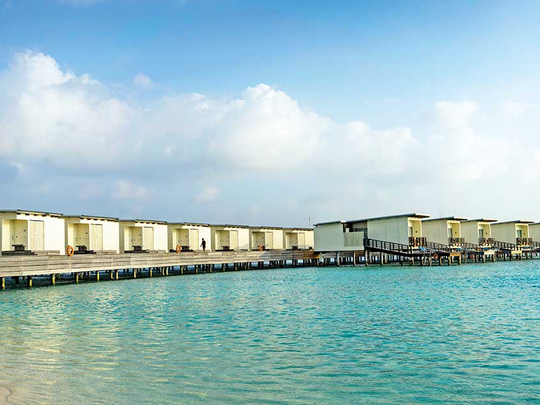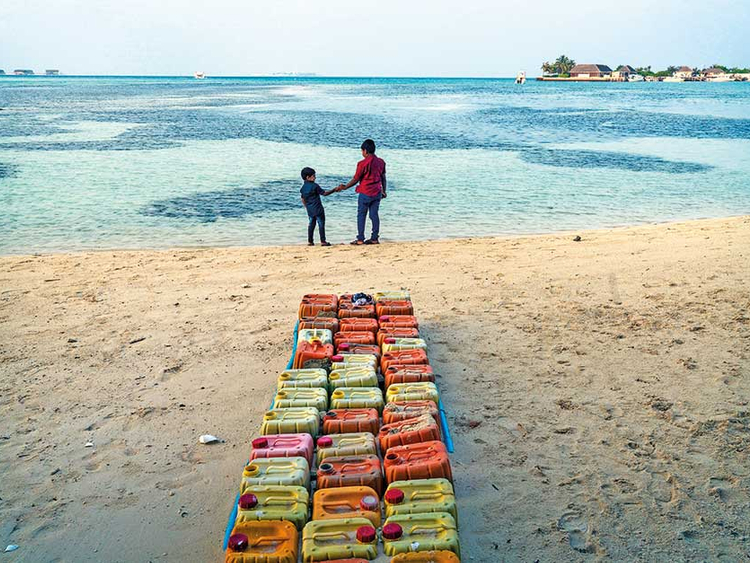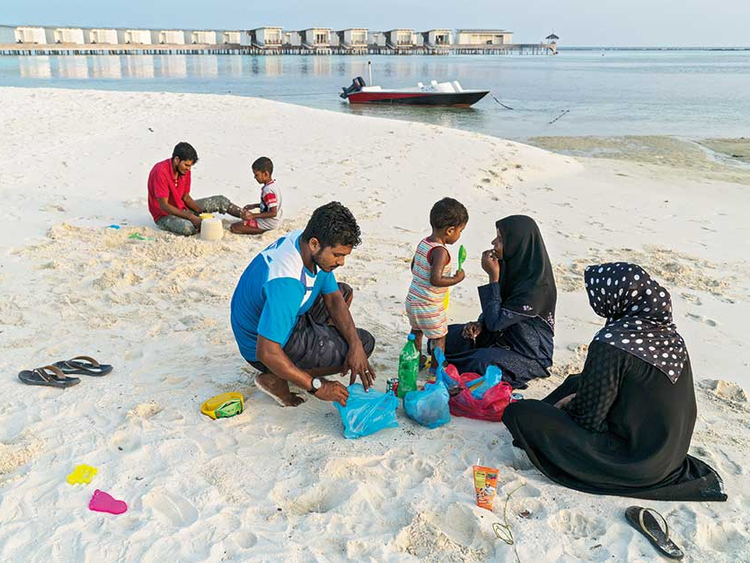
GURAIDHOO, Maldives
From the foyer of his small guesthouse some 100 feet from the shoreline, Mohammad Nizar, 52, was wondering how long his business could remain viable.
Last year, during an unusually nasty storm, water snaked through the narrow streets of Guraidhoo, a small island in the Maldives, pooling around the floor of the three-room house and chasing away guests.
Down along the beach, the picture was even worse. Erosion of the shore has become so severe, he said, that the owner of a neighbouring guesthouse stakes plastic jerrycans in the sand to curb flooding during sea swells.
“What is the lagoon now used to be the football field on this island,” Nizar said on a recent afternoon. “I have to leave this guesthouse if it keeps eroding. I am sure of it.”
Guesthouses have proliferated across this archipelago in the Indian Ocean, as the Maldives shifts from catering to the uber-rich and welcomes budget-conscious travellers.
But unlike resort islands, which spend millions of dollars on constructing sea walls, dredging sand and hiring marine biologists, islands with small-scale guesthouses are mostly reliant on the government for protection from shore erosion and rising seas, which many on Guraidhoo attribute to climate change.
Residents say the funds for conservation projects are available in the form of tourist taxes, paid through business owners to the government. The problem, they say, is that it is unclear where the money is going — or whether it ultimately can save the world’s lowest-lying country.
“If the Maldives don’t exist, we’re not losing just 400,000 people,” said Maeed Mohammad Zahir, director for advocacy at Ecocare, an environmental organisation based in Male, the capital.
“We’re losing a nationality, an identity, a cultural history, a language, a script,” he added. “We’re losing the beaches. We’re losing the coconut palms. We’re losing everything.”
For most of the Maldives’ history as a tourist destination, its government prohibited visitors from staying on the 200 islands inhabited by locals. Instead, foreigners were ferried to privately owned resort islands where villas jutting out into the ocean are the norm.
But after the 2008 election of Mohammad Nasheed as president — the first democratically elected leader after 30 years under autocracy — a law was passed that allowed residents to open guesthouses.
Although the tourism industry is still dominated by villas rented for thousands of dollars a night, foreigners can book more modest accommodations for as little as $30 (Dh110). Around 400 guesthouses are registered in the Maldives.
With guesthouses injecting cash into local economies and providing greater employment opportunities outside the resort industry, many hope this new revenue generator is here to stay. That is, of course, if the islands remain above water.
In 2015, to help fund conservation and waste management projects in the Maldives, the government passed a bill levying a “green tax” on tourists visiting resorts. For every night booked, tourists pay $6. Last year, guesthouses, which were initially exempt from the policy, were added to the list of green taxpaying businesses at a discounted rate of $3 a night.
Guraidhoo has a permanent population of around 1,900 people but hosts 12 guesthouses and another 1,000 day visitors. But residents say the government has yet to start work on their island.
“It is very simple,” said Mohammad Solih, 50, owner of Ithaa Beach Inn. “The cow that gives more milk has to be fed more. So islands that pay tourism taxes should be a priority in shore protection initiatives by the government.” Asked how green taxes are spent, the Ministry of Environment directed questions to the country’s Environmental Protection Agency, which directed questions to the Ministry of Finance. The Ministry of Finance declined to comment despite repeated requests. A review of the country’s 2017 budget proposal did not yield any information.
Among concerns voiced by residents of Guraidhoo are a monsoon season that has become more erratic and intense, and degradation of the reef system, which acts as a natural buffer against rising seas. There are also problems with erosion, which residents attribute to storm surges, harbour modifications and even shore protection practices on other islands.
Gazing out toward the island of Kandooma, which is separated from Guraidhoo by a thin channel of water, Solih said he believed part of the erosion problem could be attributed to sand dredging at the nearby Holiday Inn Resort.
— New York Times News Service














